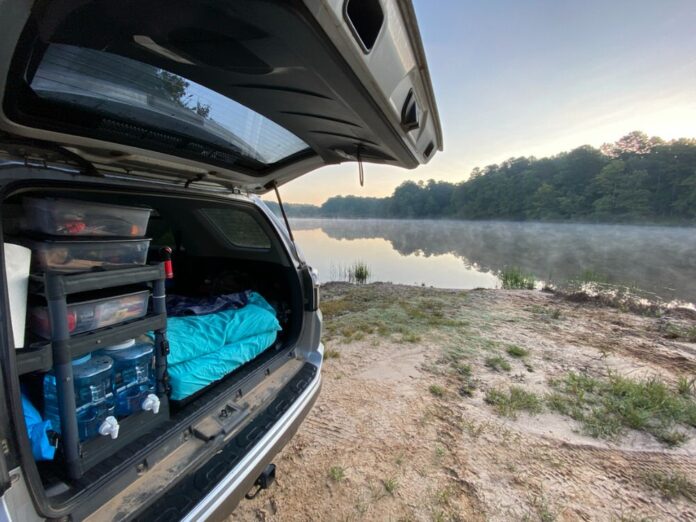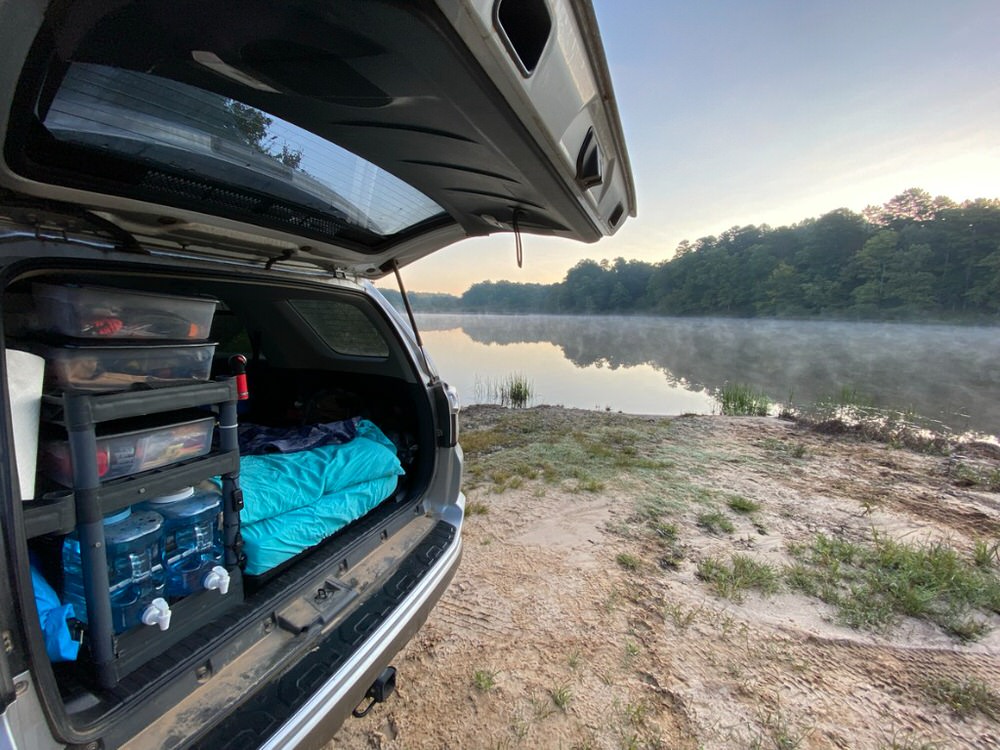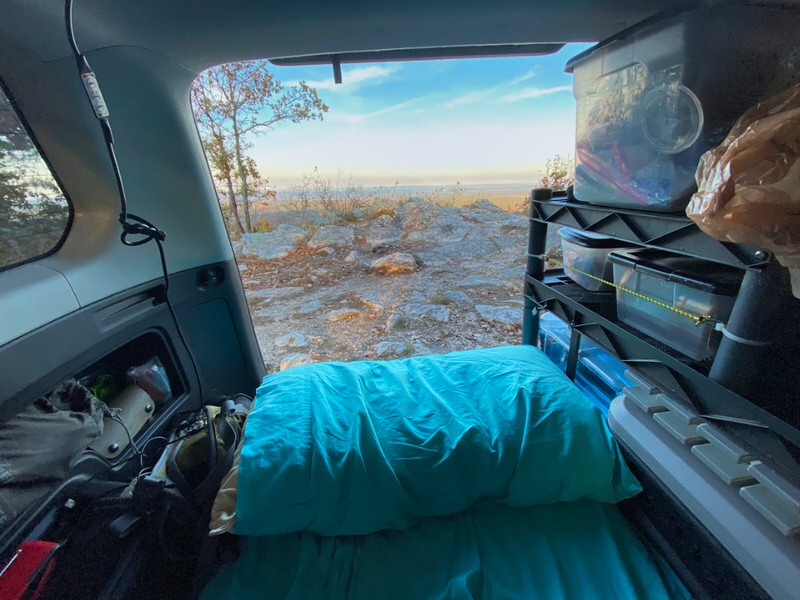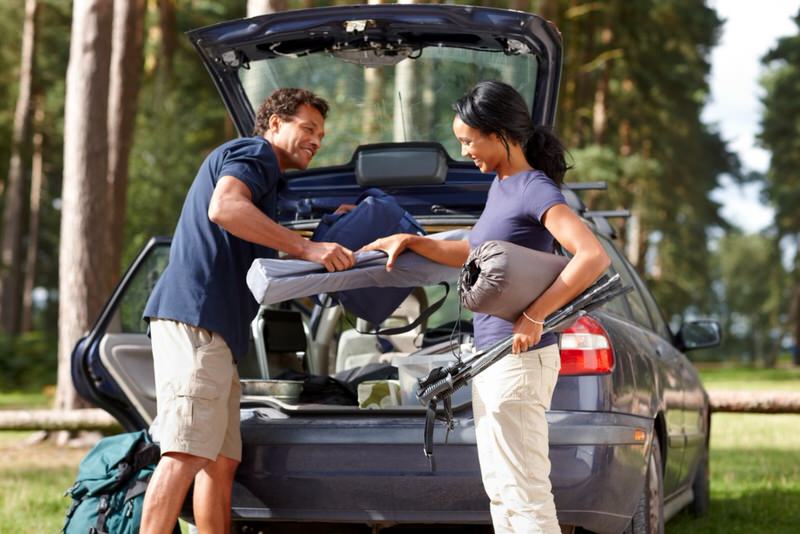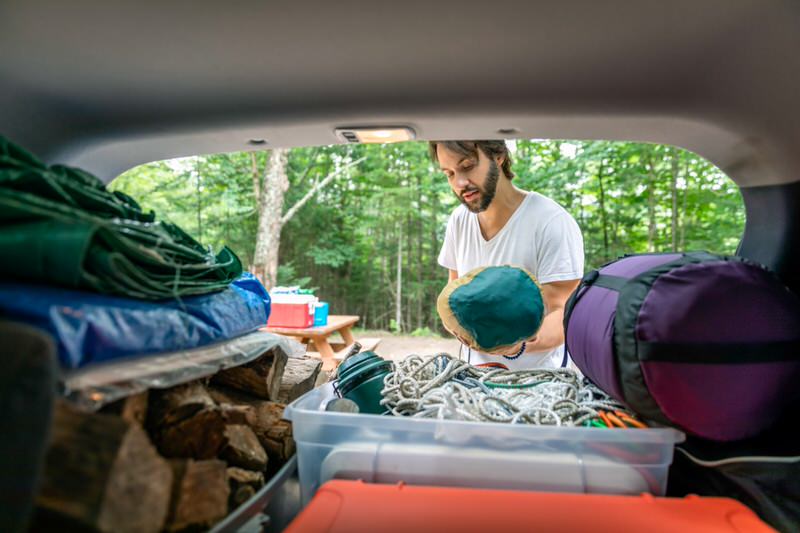Photo by sshepard via iStock
I think we can all agree that overlanding is a lot of fun.
But there are definite downsides – like having to pack all your gear and organize it in a way that you can find what you need, when you need it, without having to unpack your entire vehicle. That can be a challenge…
So, let’s discuss a few overlanding packing hacks that will help you save space, stay organized, and spare your sanity, too!
Repackage Items When You Can
I love cereal. I would eat it for breakfast, lunch, and dinner if people didn’t give me dirty looks for doing so.
The problem with cereal is that cereal boxes take up a lot of space. They aren’t malleable, either, so when I need to squeeze an extra day’s worth of cereal into my pantry, a box just won’t do the trick.
Instead, I repackage my cereal into bags, that way I have more flexibility in terms of the size and shape of the cereal vessel. I like to use resealable, reusable bags (like those shown above), that way I can wash the bag out and re-purpose it for another use after I’ve eaten all the delicious cereal it once held. Heck, sometimes I just add milk to the bag and eat the cereal right out of it!
You can repackage other items too – spices for cooking, hot chocolate powder, boxes of pasta – you name it. I even take ibuprofen out of the original bottle and put the tablets in a baggie so they more easily fit into my toilet kit. It’s all about maximizing space!
Overlanding Packing Hacks: Use Clear Bins for Storage
Photo by sshepard via iStock
Clear plastic bins or tubs are a great way to keep your overlanding gear neatly organized and easily accessible.
Granted, having a half dozen plastic tubs in your vehicle might not be possible, so you’ll need to judge how many bins you can reasonably fit in your vehicle and the size of bins that fit best.
Even if you get three or four small bins with a slide-out drawer, it will go a long way in keeping often-used items together and easy to access. This is especially true of small items that need to be contained, like flatware, cooking utensils, condiment packets, spices, and so forth. You could even use a tub for your socks and underwear or your toiletry items. Whatever supplies you use the most, a tub is a great way to maintain easy access.
Use bigger plastic tubs at home to store your gear in the off-season. This will keep your basement or garage much more tidy, and with labels on them, you’ll be able to quickly find what you need.
Pack Your Gear in the Order (or Frequency) You Need It
Photo by Dean Mitchell via iStock
With all that overlanding gear in your vehicle, you’ll need a system by which to organize it for maximum utility and to minimize searching for stuff.
I like to pack my gear in terms of the order that I’ll need it. So, for example, my tent is the first thing I see when I open the back of the car. That’s because one of the first things I do when I get to camp is set up my tent.
My tent is also something I frequently use – another criteria for organizing your gear. By putting frequently used items in front, you minimize how much unpacking and packing you have to do.
This system also allows me to maximize storage space by putting little-used items in underfloor storage compartments in the back of my vehicle. For example, items like road flares are things that I want on hand in case of an emergency, but I’ve never had to use one in decades of overlanding trips, so they get relegated to the bottom of the pile, so to speak.
Overlanding Packing Hacks: Have a Packing List
Photo by Onfokus via iStock
For me, the linchpin of packing your overlanding gear in a way that’s useful and organized is to make a packing list of all the items you’ll need for your trip. This accomplishes a few things.
First, no two trips are alike, so the gear you need for one trip might not be what you need for the next. This allows you to tailor the gear you pack rather than packing a bunch of stuff you might not need.
Second, developing a packing list is an opportunity to identify what the most important or most often used items are. You can use that information to plan how you pack your vehicle for maximum functionality.
Third, a list is obviously a good way to prevent forgetting something you need for your trip. If you have to buy a bunch of stuff on the road, it can throw your packing plan out of kilter because you might not have room for additional gear.
At the end of the day, these overlanding packing hacks aren’t rocket science. It’s really just about planning and preparation. Take the time to figure out what you need, how to organize it, and how to pack it in your vehicle in a way that makes sense, and you’ll find that you have a much more streamlined overlanding operation!



